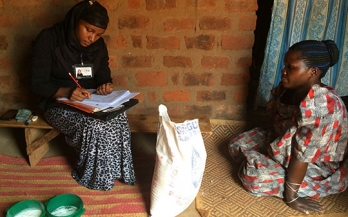In this paper we review the evidence basis for prevention of folic acid–sensitive neural tube defects through public health interventions in women of reproductive age, the proven vehicles for delivery of folic acid, and what is needed to effectively scale these, and provide a snapshot of potential innovations that require future research.
The purpose of this study was to evaluate the effects of prenatal docosahexaenoic acid supplementation on offspring development at 18 months of age.
The objective of this study was to assess the associations between anemia and multiple proximal risk factors and distal risk factors in nonpregnant women of reproductive age.
A lack of information on the etiology of anemia has hampered the design and monitoring of anemia-control efforts. This study aimed to evaluate predictors of anemia in preschool children by country and infection-burden category.
Behaviour change communication (BCC) is a critical component of infant and young child feeding interventions. In this study we asked BCC practitioners working in low‐ and middle‐income countries to participate in an examination of BCC practice.
Rapid test kits (RTK) have been included in household surveys to test the iodine content in salt. The aim of the current paper was to examine the performance of RKT under field conditions and to recommend their most appropriate use in household surveys.
The purpose of this study was to assess the performance of the iron spot test in Arabic bread made from white wheat flour. These results show that a field-friendly method for testing bread could have a useful role in the monitoring and evaluation process for flour fortification programs.
This article provides an overview of the BRINDA project and describes findings that will inform global guidelines on the assessment of anemia and micronutrient status and will guide the development of a research agenda for future longitudinal studies.
Multiple-micronutrient (MMN) fortification of beverages may be an effective option to deliver micronutrients to vulnerable populations. The aim of the present systematic review and meta-analysis is to evaluate the nutritional impacts of MMN fortified beverages in the context of low-middle income countries.
The BRINDA project is a multiagency and multicountry collaboration that was formed to improve micronutrient assessment and to better characterize anemia. Findings from this project can inform guidelines and strategies to prevent and control micronutrient deficiencies and anemia globally.










